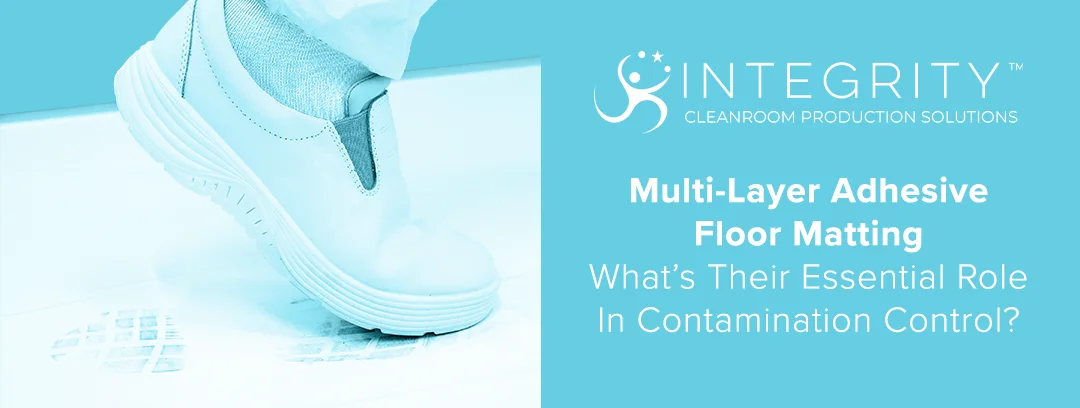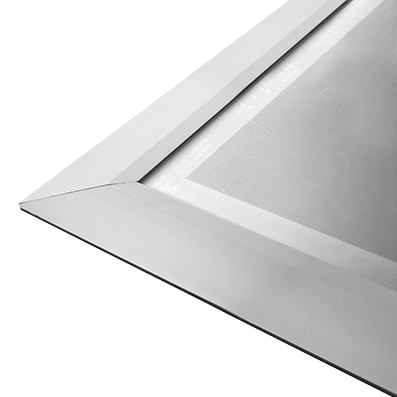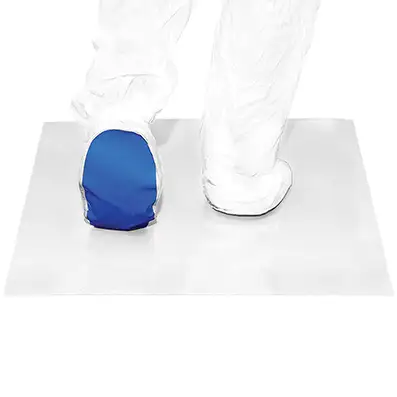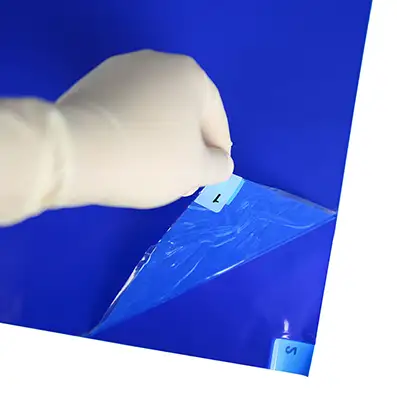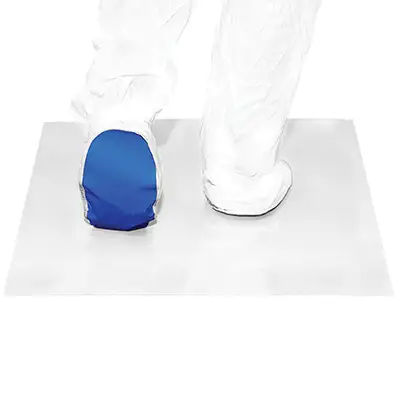What Are Multi-Layer Adhesive Mats?
Adhesive matting is a simple but effective solution for controlling contamination. These mats trap dirt, dust, and other particles from shoes and equipment wheels before anyone enters a controlled area. By doing so, they help protect the cleanroom environment.
While adhesive mats are a useful tool, they should be part of a wider contamination control strategy. Keeping a cleanroom truly clean requires training, regular checks, and strict procedures.
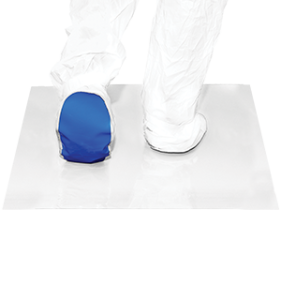
Tips for Getting the Best Results
To make adhesive matting work well for you, place them at all cleanroom entry points and in high-risk areas. Think about how people and equipment move through the space to ensure that everyone steps on the mats. This improves particle capture.
Mats should be wide enough to cover full doorways so all foot and wheel traffic contacts the sticky surface. This ensures maximum contaminant removal.
Make Mats Easy to Use
Clearly mark where mats are placed to help staff and visitors remember to use them. Set up a routine for checking mats and peeling off dirty layers to keep the surface sticky and clean.
It’s also helpful to use low-profile ramps in areas with heavy equipment. These ramps help shoes make full contact with the mat.
Train Staff and Set Clear Rules
Train all personnel on how and why to use adhesive mats. Make sure mats are fixed securely to the floor to avoid slips or trips. Use proper adhesive or non-slip backing for stability.
Set clear procedures for when to replace mats and ensure this information is visible to all team members.
Use Mats as Part of a Bigger Strategy
Adhesive mats work best when included in a full cleanroom protocol. This should include gowning, equipment cleaning, and contamination checks. In busy areas, consider using mats with bevelled-edge frames to reduce the chance of tripping and to make movement smoother for carts.
Check how well your matting system works over time. If contamination levels remain high, adjust where mats are placed or how often they are changed.

Need help?
See our Matting Installation Guide for step-by-step support on setup and maintenance.
For more advice on cleanroom contamination control, visit our Resource Area.
📞 Get expert advice today! Contact our sales team on +44 (0) 1473 836 205 or email info@integritycleanroom.co.uk.
PUBLISHED 21/11/23
 +44 (0)1473 836 205
+44 (0)1473 836 205


